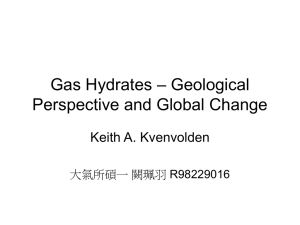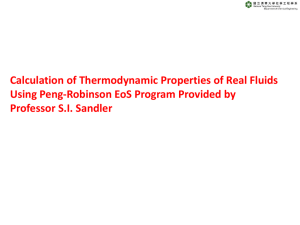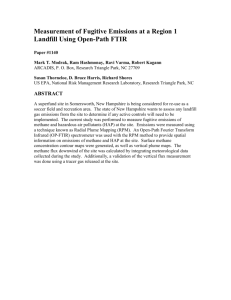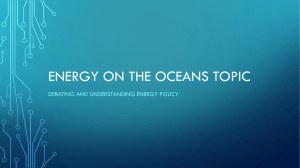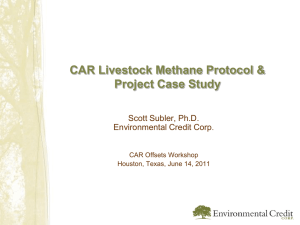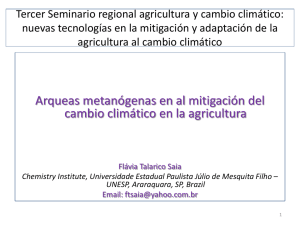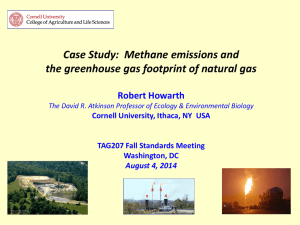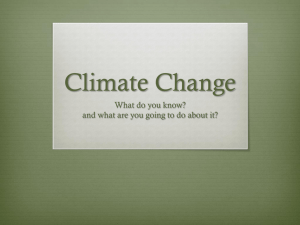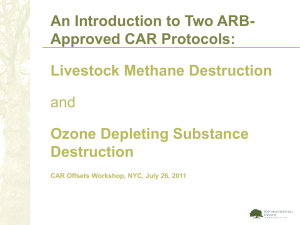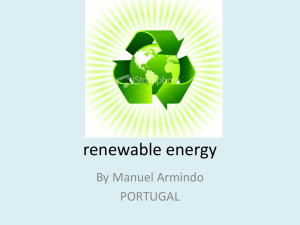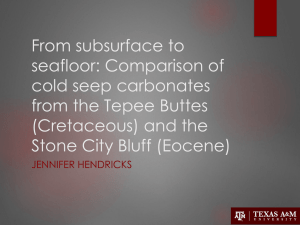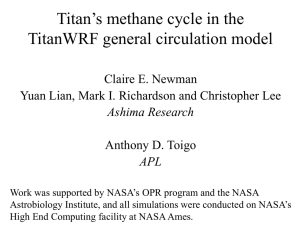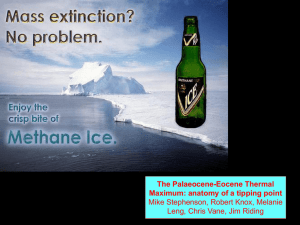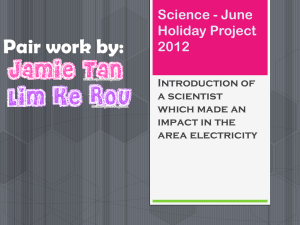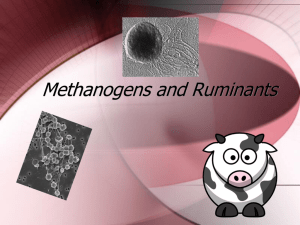Identification of Methane Emissions in an Urban Setting
advertisement
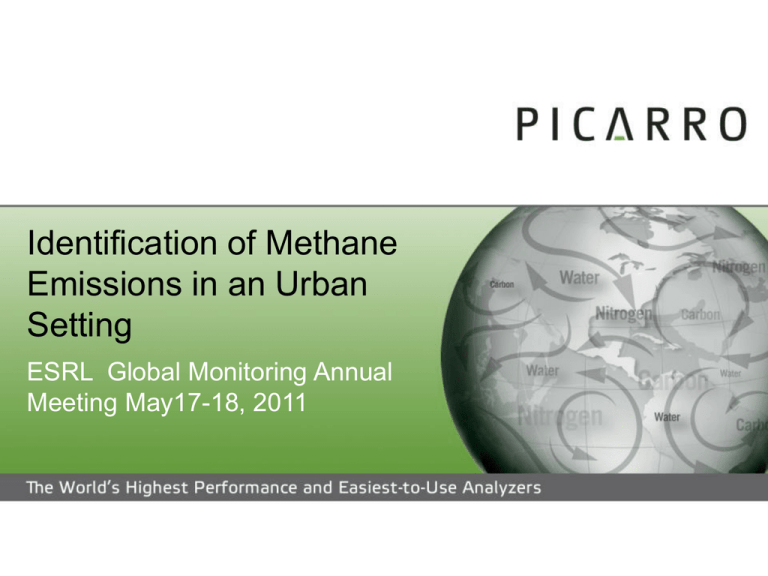
Identification of Methane Emissions in an Urban Setting ESRL Global Monitoring Annual Meeting May17-18, 2011 Collaborators in this effort • • • • • Nathan Phillips & Lucy Hutyra – Boston University Jocelyn Turnbull & Colm Sweeney – NOAA/ESRL Paul Shepson & Maria Obiminda Cambaliza – Purdue Eric Crosson, Chris Rella, & Sze Tan – Picarro, Inc. Robert Ackley – Gas Safety, Inc. Objectives of this effort • As an extension of the INFLUX work – Identify methane source locations and gather information on methane flux signals (relative magnitudes). • • • • Provide prior knowledge for inversion models. Data to help validate inversion model results. Information to help improve flux measurements from aircraft. Data could help to model cross-wind dispersion in an urban environment. Method: Measuring Methane Plumes to Determine Source Locations Wind • Map out methane concentrations while driving along roads and highways. – CH4: 2 ppb precision at 0.5 Hz. – GPS data – Wind velocity Methane Source methane plume Method: Identifying methane source locations Guidance from Simple Gaussian Plume Model Sources Reconstruction Source locations calculate from plumes roads methane source and plume Four source locations o o Winds: 0 to 360 in 20 steps Atmospheric stability class C Model Results: Winds from only two orthogonal directions…….source location looks possible. Sources Reconstruction Atmospheric Stability Class F Class A From Models to Reality: Measurements in Indianapolis per million) (parts Methane Concentration Methane (ppm) 40 PlumeRUN1-4_19_2011-Data-landfill Methane Measurements Taken While Driving Methane measurements while driving through plume 35 30 25 20 15 10 5 108.560 108.561 108.562 Distance Traveled Days after January 1 108.563 108.564 “Methane Maps” of Indianapolis Wind direction, 23km/hr 5 4 3 2 1 Some Sources are easy to Identify 5 4 3 2 1 > 25 ppm Others are NOT so Easy 4 3 2 1 5 Methane Data Taken the Next Day 5 Wind direction, 23km/hr 6 7 4 8 3 2 1 Reproducibility of Plume Measurements Repeated landfill plume measurements taken while driving 2 km from source. (Location: Danville, IN) - Wind speed = 3.8 ± 1.2 km/hr - Source Flux 7,000 grams / minute 1.5 km 45 minutes High variability in plume shape. Take advantage by…… acetylene Stationary Tracer Method to Assess Fluxes Wind Landfill methane plume methane tracer plume • Fixed location 1300 m downwind of landfill • Natural variation in wind direction & wind speed will cause variability in signal as the plumes sweep across the detection point • High correlation indicates good overlap between plumes Methane Flux Determination (Location: Danville, IN) • Plot methane vs. acetylene. • Slope of line gives ratio of emission rates. = 7.5 moles / s A Very Complex Methane Map: Boston Natural Gas Leaks in and around Boston Natural Gas Leaks Destroying Vegetation • Leaks in aging natural gas pipelines are killing trees all across the northeast. – Natural gas leaks can kill trees by displacing oxygen in the soil and drying out their roots. – 7,500 to 10,000 trees affected in Boston area alone. • Several cities are asking for damages in excess of $1M each. Flux (cubic feet / m2-day) at surface 0.237 1.407 1.007 0.012 Gas in air 8” below surface 26% 48% 80% 63% http://natgaspollutes.com Summary • Identification of methane source locations by driving around looks possible. • Flasks need to be analyzed. • Need model to reconstruct methane probability distribution from plume data. • Need to take more systematic data.

